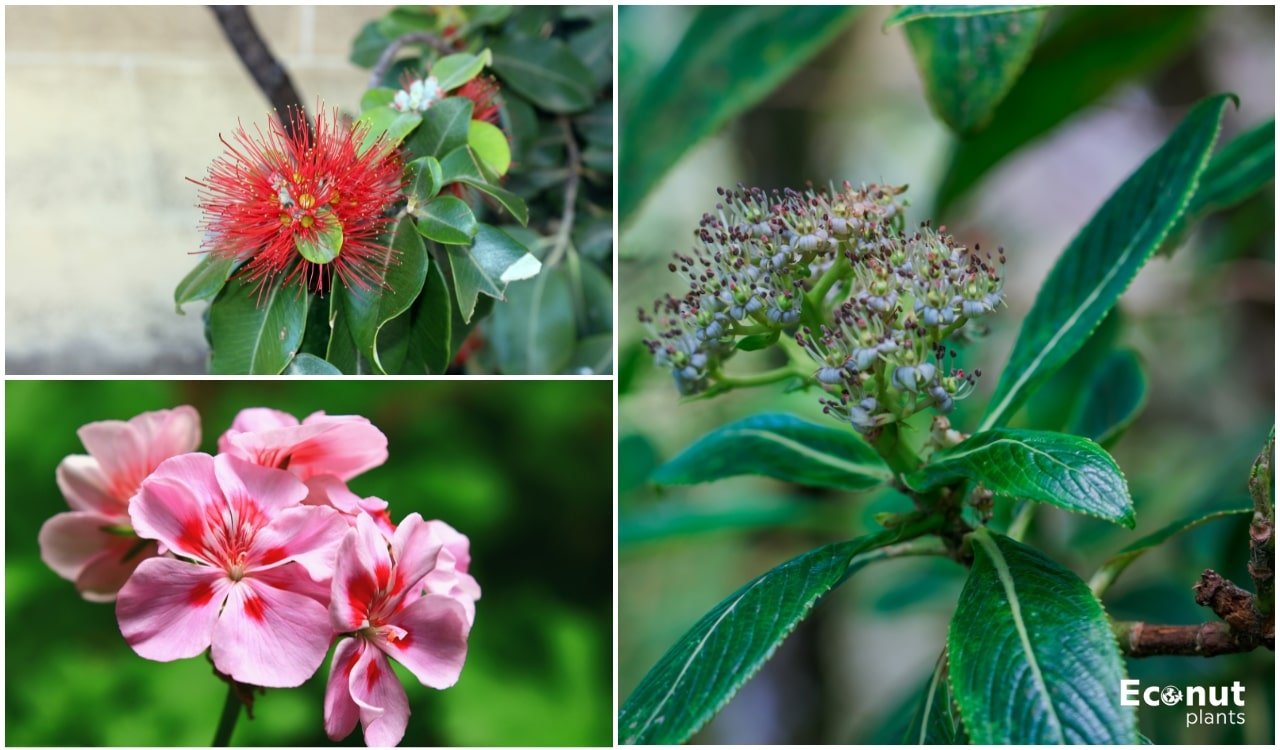Hawaii is home to some of the world’s most magnificent vegetation. Its tropical climate makes it home to a diverse range of flowers, some of which are incredibly rare or even endangered.
Particularly in terms of size, colour, shape, and interactions with specialized pollinators, endemic flowers have developed an incredible diversity. This article explores the 21 unique flowers that are peculiar to the island state of Hawaii.
1. Pua Kala
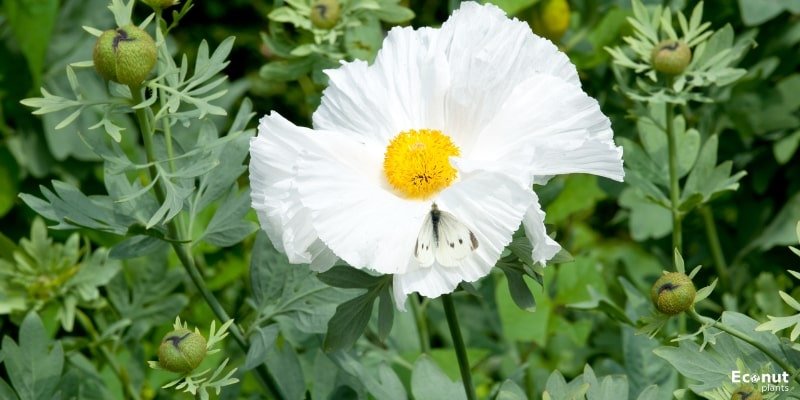
Scientific Name: Argemone glauca
The Hawaiian poppy, beach poppy, or prickly poppy is some of the frequent names for this flower. Pretty blossoms last only one day, and the blooming season is inconsistent throughout the year. The contrast between the waxy leaves and the petals’ pancake-like feel is startling.
Though they don’t last very long, Hawaiian poppies yield resilient seeds that disperse swiftly. Among the few natural flowers that can withstand fire is this one. One could view the leaves’ prickles negatively. This bloom can be found on all of the main islands in dry-wooded coastal areas.
2. Molokai Ohaha
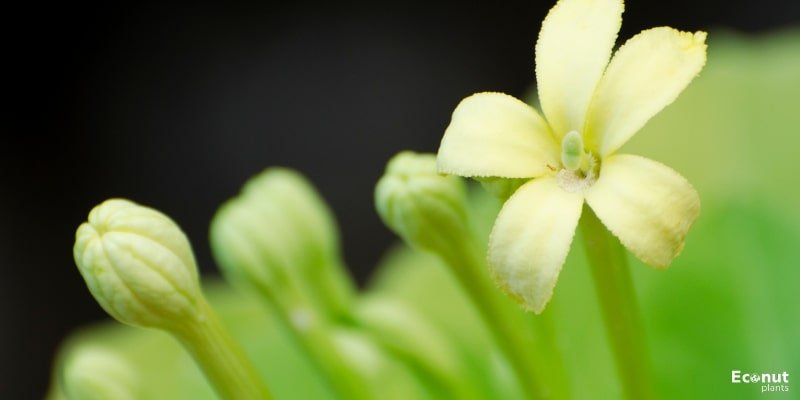
Scientific Name: Brighamia rockii
The Molokai Ohaha is a native flowering plant of the Hawaiian island of Moloka’i that belongs to the Campanulaceae family of bellflowers. It grows on its rocky cliffs in five mesic shrublands and woodland zones.
Molokai Ohaha is a flower that grows up to 16 feet tall and has a stem that resembles a succulent. Because of its overall shape, this flower is also known as cabbage-on-a-stick. The oval-shaped, glossy, bright green leaves form a rosette atop the plant. Several inflorescences with three to eight white trumpet-shaped blooms emerge from the gorgeous foliage. It has a lovely smell and blooms in late autumn.
3. Mamane

Scientific Name: Sophora chrysophylla
Mamane is a native shrub to Hawaii, but it can also grow to be a 50-foot-tall towering tree. It is a perennial plant that blooms and belongs to the Fabaceae family, which also includes beans and peas. The leaves of the tree are pinnately complex, and their branches have a hint of gold colour. Butterflies resemble pea-shaped, bright yellow flowers that develop in bunches at the tips of branches.
Except for Ni’ihau and Kaho’olawe, mamane may be found on all of the main islands. It rarely occurs in wet forests and prefers shrublands, mesic, and dry woods. Blooming time varies by location. However, it usually takes a while for it to bloom.
4. Koki’o

Scientific Name: Kokia cookie
This plant, which is exclusively found in Hawaii and is unfortunately not found in the wild, is also occasionally referred to as the Moloka’i Treecotton. The final wild specimen perished in the early 1990s, leaving only cultivated forms remaining. Making it one of the rarest plants in the world, the most recent census indicates that only 23 grafted plants are thought to be alive.
Its death is believed to have been caused by the declining Hawaiian honeycreeper population—two of the three species of honeycreepers are now extinct. Beautiful crimson blossoms that resemble the tropical-looking Hibiscus are produced by the little deciduous Koki’o tree. Moloka’i Island’s lowland, dry woodlands were where it was first discovered.
5. Oahu Pilo Kea
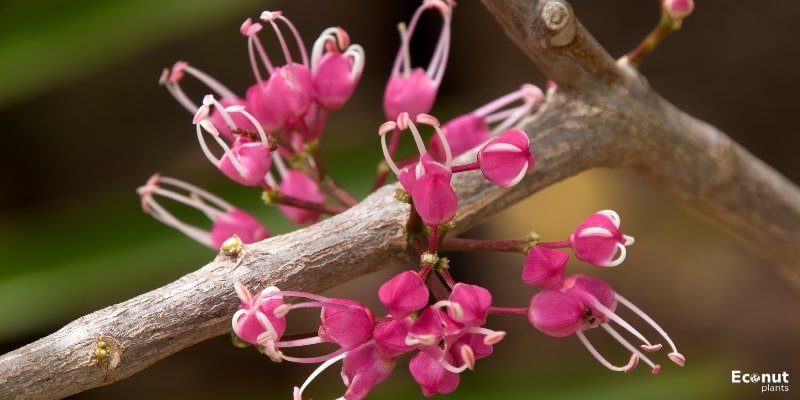
Scientific Name: Platydesma cornuta
The Oahu Pilo Kea, often referred to as Alani is an endangered species of the Rue family (Rutaceae) native to the island of Oahu. Since 2012, it has been classified as an endangered plant, with habitat degradation and feral pig appetites posing the biggest threats. This upright perennial shrub can reach a height of 20 feet and has narrow green leaves. Mesic woodlands are preferred by Pilo Kea.
However, the blooms steal the show. When the blooms mature, they change from being robust, square-shaped, spiky green cases to white, waxy, bell-shaped blossoms. These are petite, visually striking flowers that are found near the main stems. Under ideal circumstances, they can blossom all year.
6. Ma’ohi’ohi

Scientific Name: Stenogyne microphylla
This plant, also called the Hawaiian small-leaved mint, grows on the ground and among other plants in a habitat like a vine. Fortunately, it gets along well with other plants and doesn’t cause any harm to them. It tastes nothing like mint, even though it’s called the Hawaiian Mint. Nevertheless, the smell is meant to deter harmful grazers.
The bloom’s curvature draws attention to the flower and pollinator’s evident evolutionary link. The Amakihi bird, which has a bent bill, pollinates this flower. The stems have four flat sides and a square form. The tall blooms have long, projecting stamens and are coloured magenta, purple, or white. This plant is widespread in woods that are managed with ginger and weeds.
7. Ohi’a Lehua

Scientific Name: Metrosideros polymorpha
The Ohi’a Lehua is a blooming evergreen tree native to Hawaii’s six main islands. It belongs to the Myrtaceae family. A mass of vividly colored red or yellow stamens makes up the immensely stunning blossoms. Although the tree grows slowly, it is a very hardy species.
The Ohi’a Lehua tree is one of the most widespread on this list because of its resilience and wide distribution of habitat. It is found at sea level and in high cloud forests, and it is also among the first plants to emerge from newly formed lava flows. If conditions are right, it can reach a height of 65 to 85 feet. However, it grows to a considerably smaller size on basalt or in marshy areas.
8. Hawaiian Red Cranesbill
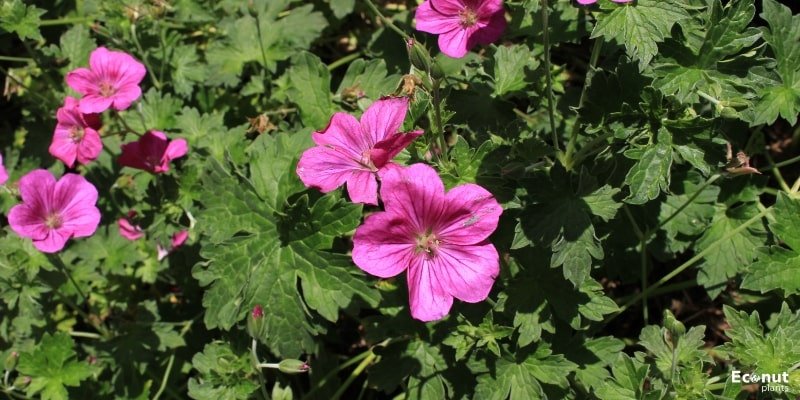
Scientific Name: Geranium Arboretum
“Red Cranesbill” or “Hawaiian Red Cranesbill” are the names given to this uncommon species. This species, which is indigenous to the island of Maui, is deemed endangered. It is well-known for its vivid fuschia-to-crimson-coloured blooms and can reach a height of roughly 13 feet in the wild. Additionally, the rough edges of their leaves resemble teeth.
Birds are the only species in this genus that are capable of pollinating other species in the group. Conservation efforts are in progress, and there may only be 50 or fewer living plants at this time.
9. Oahu Riverhemp
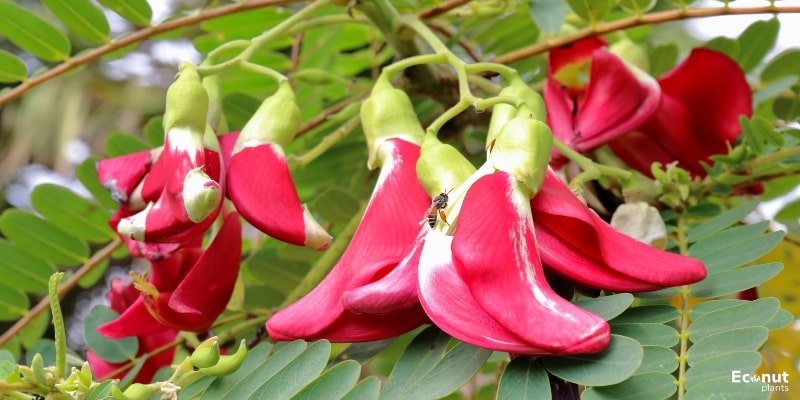
Scientific Name: Sesbania tomentosa
A perennially blooming plant belonging to the Fabaceae family of peas is called Oahu Riverhemp. It is unique to the Necker, Nihoa, and main Hawaiian Islands. The plant’s endangered position has been exacerbated by alien plants, grazing, wildfires, off-road vehicles, and foot traffic. However, Nihoa Island still has a thankfully dense population.
10. Hawaiian Iliau

Scientific Name: Wilkesia gymnoxiphium
This flowering plant, which is native to Kaua’i Island in Hawaii, belongs to the sunflower family, Asteraceae. Regretfully, it shares this list’s status as endangered with many others. Waimea Canyon is where it is most frequently found. Particularly on the inaccessible hillsides where grazing goats are unable to consume them. A few protected enclosures exist where one can see dense populations.
It is a monocarpic shrub with woody stems that can reach a height of sixteen feet. At the base of the stem, the leaves are arranged in whorls ranging from nine to fifteen. With its yellow, daisy-like flower fountains that bloom from May to July, the plant resembles a palm tree. Every flower head will have its seed at the end of its life.
11. Ohe ‘ohe
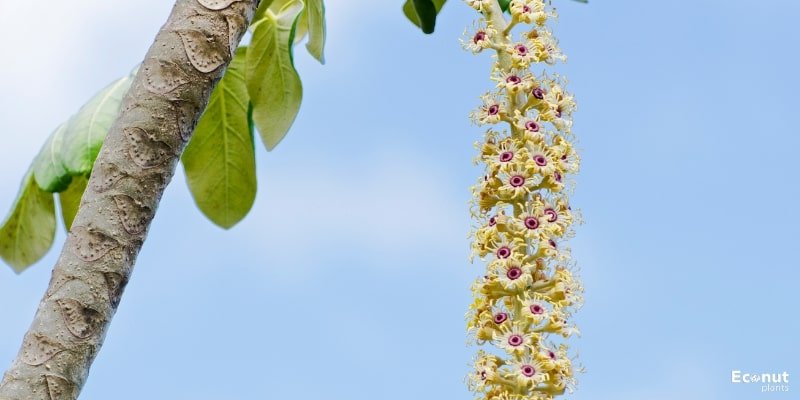
Scientific Name: Polyscias racemosa
This stunning flowering plant, which belongs to the Araliaceae family, is also known as the false ‘Ohe. It is unique to the island of Kauai and extremely rare in the wild because sugar cane plantations have displaced its natural habitat. After being rediscovered in the 1960s, it is currently classified as critically endangered. This tree is typically found on exposed hills and cliffs in coastal woodlands.
The tiny tree Ohe’ Ohe can reach a height of 25 feet. One straight trunk gives rise to spreading branches that are covered in up to 250 tiny, pale yellow blooms, like long ropes. Each flower has pink and white throats that contrast with the tiny, fragile petals. During the summer blooming season, the tree typically loses its leaves.
12. Nehe

Scientific Name: Lipochaeta connata
Nehe, the common name for Lipochaeta, is a genus of flowering plants belonging to the Asteraceae family of daisies. It is native to Hawaii, most especially the islands of Ni’ihau and Kaua’i. This plant has two subspecies, “acris” and “connata,” yet its present state of conservation is unknown. It’s scarce, though, just like other Hawaiian indigenous flowers.
Nehe is a perennial subshrub that is herbaceous and reaches a height of eight inches. When conditions are good, it produces tiny yellow blooms that resemble daisies and bloom all year round. The petals have a green center and a delicate toothed edge. Yellow flowers were thought to be a symbol of high or divine rank, and they were frequently used to make leis.
13. Alulu

Scientific Name: Hillebrandia sandwicensis
Begonia’s Hawaiian Cousin or ‘Aka Aka ‘Aka, is another name for the Alulu. It belongs to the family Begoniaceae, which is made up of the genera Begonia and Hillebrandia. The Alulu is the only species found in Hillebrandia. It is also the only plant known to exist in Hawaii that is a relict, meaning it has survived in a primitive or earlier form from a previous era, resulting in its excitingly multifaceted uniqueness.
Alulu blossoms are pink or white and appear from February to June. Alulu is currently found on the islands of Maui, Molokai, and Kauai. It prefers to live in damp ravines. It has never been found on the Big Island and has gone extinct on certain islands, considered a plant that is in danger of being endangered.
14. Haha
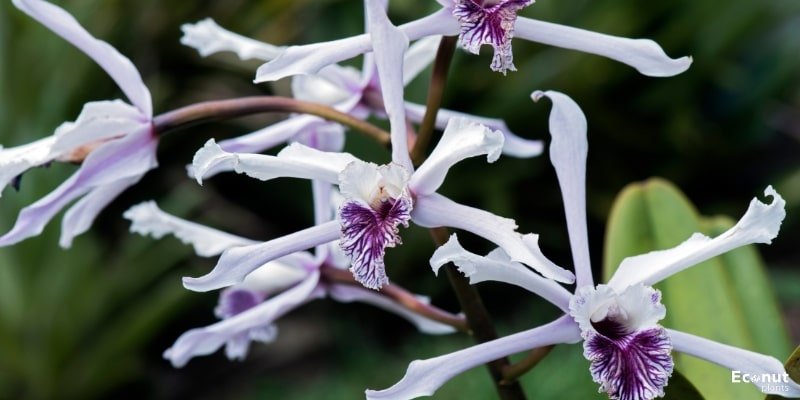
Scientific Name: Cyanea angustifolia
It is a rather frequent flowering shrub in its natural habitat. Though it is simple to grow, it is rarely found in horticulture. It often grows in moist, mesic forests and valleys at elevations between 150 and 2,500 feet. It belongs to the family of bellflowers, which is primarily found in the Ko’olau Mountains. Haha can grow to a height of ten feet, occasionally even more.
It is a year-round erratic bloomer with typically white, pink, or purple blossoms. The inflorescence is shown in hanging arrangements with anywhere from six to twenty-five curled flowers. After flowering, purple berries appear, and birds aid in dispersing the seed. When food was scarce, the ancient Hawaiians would cook and consume the course, narrow leaves.
15. Ma’o Hau Hele
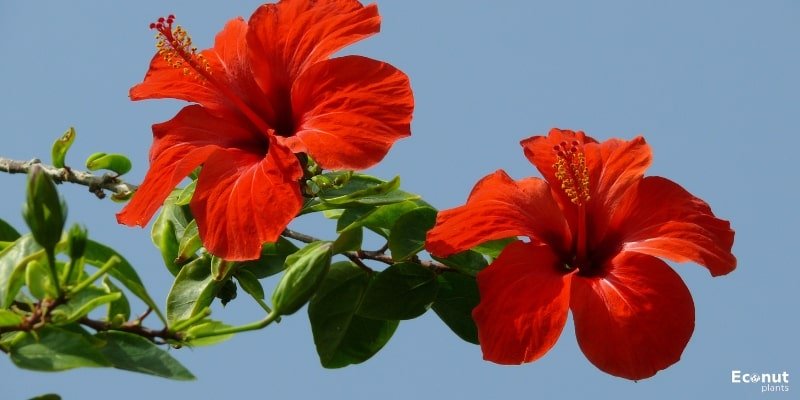
Scientific Name: Hibiscus Brackenridge
This yellow hibiscus, often called the Hawaiian Hibiscus, was designated as Hawaii’s state flower on June 6, 1988. Unfortunately, though, it is now considered an endangered species. Hawaii is home to seven native hibiscus species, although the Chinese hibiscus is the one that is most frequently found there. Often grown as a decorative plant, it is endangered in the wild.
The Hawaiian hibiscus is a tiny shrub with a maximum height of fifteen feet. It blooms all year round, starting in late winter and ending in late spring.
Furthermore, it offers prolonged seasonal colour and interest despite having a limited flowering period. The flowers have a deep crimson throat, bright yellow petals, and complex veins. It gives way to a gorgeous, tropical-looking golden staminal column.
16. Uki Uki
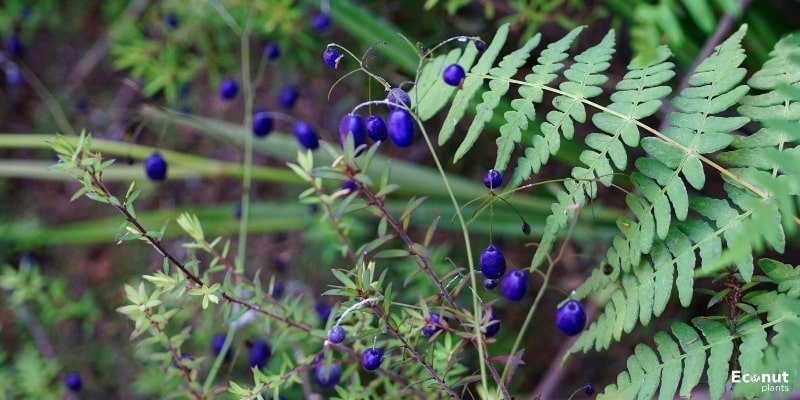
Scientific Name: Dianella sandwicensis
Since the Uki Uki was once a member of the lily family, it is also popularly referred to as the Hawaiian Lily. It is the only representative of the Asphodelaceae family in the Hawaiian Islands and is now a member of that family.
Situated amidst tall, slender leaves, the flowers are exquisitely attractive but not overly conspicuous. With their orange filaments and yellow anthers, the flowers range in colour from white to pale blue.
In Hawaii, purple berries are still used as a natural colour for kapa and other fabrics, as well as for seeded lei. Typically, it can be found in areas that are open or shaded, such as mesic woods, dry shrublands, upland wet forests, and grasslands atop lava.
17. Hinahina

Scientific Name: Geranium cuneatum
This perennial shrub also referred to as silver geranium grows slowly and is typically found in open, dry environments at higher elevations. The shrub bears cream-coloured, white- to yellow-coloured flowers that reach a height of around three feet.
The five thin, egg-shaped petals that make up each bloom are either completely coloured or have a purple throat lining. The leaves have teeth at the margin and are veined in an oblong-wedge shape. The most prevalent species of geranium is geranium cuneatum. Geranium multiflorum, Geranium arboreum, and Geranium hanaense are the other varieties.
18. Nanu

Scientific Name: Gardenia Brigham
The Hawaiian Gardenia is indigenous to Hawaii, yet you may have heard of gardenias because they are a popular species across America. It belongs to the Rubiaceae family of coffee plants. On a tiny tree that can grow up to 16 feet tall, the blooms open.
The oval, glossy, black leaves are present. The tree has lone white blooms with the bases of six petals fused. Each petal has a crimped one side that gives it a lovely form. This floral plant, which lives in arid tropical woodlands, is extremely endangered. The fragrant, coconut-scented blooms are frequently used in lei.
19. Koʻoloaʻula
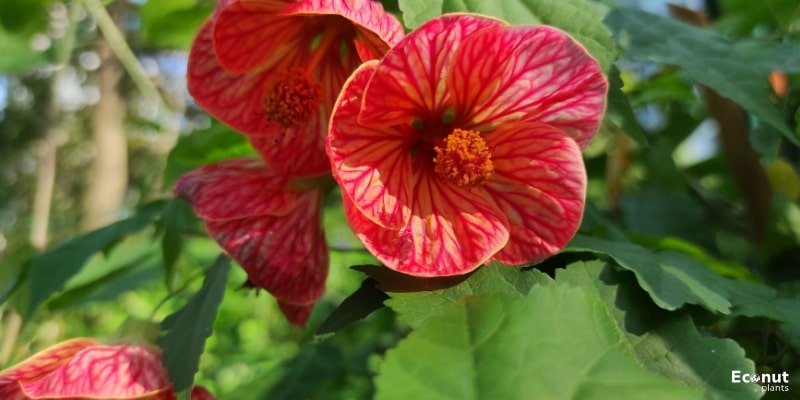
Scientific Name: Abutilon menziesii
This native Hawaiian flowering plant is extremely threatened. It belongs to the Malvaceae family of mallows. It can grow up to ten feet tall, and the bigger leaves frequently cover the blossoms.
However, the blossoms are beautiful and hibiscus-like up close. The most popular color is red, although there are also various hues like butter, maroon, pink, salmon, and purple. The dry forests of Lana’i, Maui, O’ahu, and the Hawaii Islands are home to this flower.
20. Kanawao
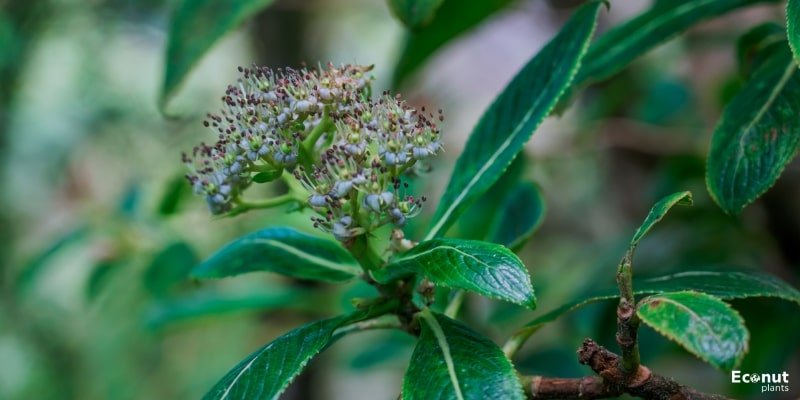
Scientific Name: Broussaisia arguta
This perennial flowering plant is native to Hawaii and a member of the Hydrangeae family. It is one of the most common on this list, distributed throughout the main Hawaiian Islands in mesic and wet forests. Native birds prefer to eat the flowers and seeds, which disperse them across the woodlands and contribute significantly to the plant’s common status.
Showy and available in a variety of hues, such as cream, white, yellow, pink, light blue, and greenish-white, are the blossoms. It is an evergreen shrub with leathery, tooth-edged leaves that reaches a height of 20 feet. It is a long-lived plant that does well at higher elevations. The underside of leaves is a favourite spot for Happy Face Spiders.
21. Cosmosflower Beggarticks

Scientific Name: Bidens cosmoides
It belongs to the sunflower family and is commonly referred to as Cosmos flower Beggar ticks. One of the biggest plants in the Bidens genus, it is native to Hawaii’s Kaua’i Island. Additionally, birds—especially honeycreepers—pollinate it, which is why their number is considered endangered and is gradually diminishing. Bushfires and invasive weeds are also causes.
Bidens cosmoides is a seven-foot-tall perennial herbaceous flowering vine. The long, thick filaments contrast with the bright yellow-to-orange flowers, which have a dark crimson throat. It occasionally blooms all year long under the correct circumstances.
Conclusion
If you’ve had the good fortune to travel to the Hawaiian Islands, you have undoubtedly noticed the profusion of incredibly stunning plants and animals. Much work is being done to safeguard several endangered native Hawaiian flowers.
Additionally, there are undoubtedly a tonne of flowers in Hawaii that have not yet been discovered, as demonstrated by the last flower on our list.

